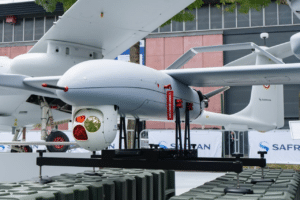
Safran and Edge Autonomy present Lanner, a new configuration of the Penguin lightweight tactical drone system
Safran Electronics & Defense and Edge Autonomy proudly present Lanner, a new configuration of the Penguin Vertical Takeoff and Landing (VTOL) Uncrewed Aircraft System (UAS) during the exhibition Eurosatory 2024. The Lanner configuration is based on the field-proven Penguin UAS platform and has been specifically modified to meet the requirements of the SDTL (Light Tactical Drone System) program for the French armed forces.








